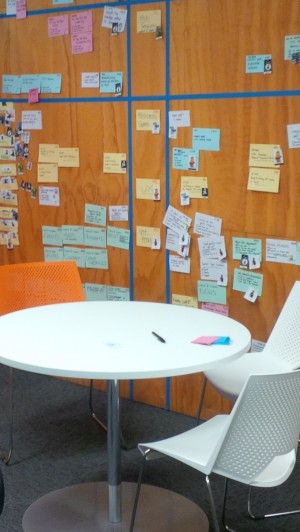Work patterns for 'Agile' management and 'Action' learning.

'Agile' managment methodologies are becoming more common within businesses that are working in highly volatile business environments. Within Emergency Operations Centres (EOC's) where quality of decision making under extremely stressful conditions predominates, or within the IT sector where speed to market and innovation are driving forces, 'Agile' managment is already part of the everyday language. Words such as daily 'Scrum', 'Sprint' and 'Kanban' frame a new paradigm of working and the physical envionment that supports it. The same methodology is well established within the education sector, termed 'Action Learning'.
Agility within the workplace environment is about making decisions faster and of better quality. Key tenets of the Agile methodology are set out in the Agile manifesto:
- Individuals and interactions over process and tools
- Delivering value over comprehensive documentation
- Customer collaboration over contract negotiation
- Responding to change over following a plan
That is while there is value in the items on the right, there is greater value in the items on the left.
Scrum

Scrum is one of the best known concepts of Agile management. A Scrum is a daily meeting between cross functional team members, however the meeting will last no longer than 15 minutes and it is preferable that the meeting occurs while standing. Stand up scrum tables scattered strategically between teams throughout the workplace environment supports this process.
Sprint
Each team member will return to their personal workspace to actually do the work, but by reducing the feedback loop to every 24 hours as part of the scrum, in addition to a weekly review, the speed of ideas and decisions accelerate rapidly while the quality and value of output also increases. Development cycle is rapid and is therfore termed a 'Sprint'. Personal workspace allows for contemplation, but provides peripheral visual access to the scrum table and other team members.
Kanban
Kanban is a method of visually representing work, illustrating progress, and getting feedback as quickly as possible. The greater the opportunity for visual performance management and collaboration the faster the outputs. Within 'Agile' work environments every wall is covered by post it notes and butcher paper. This works best at intersections or nodes in the circulation paths where there is also space for gathering and the work is visually accessible to a broader crossection of participants.


